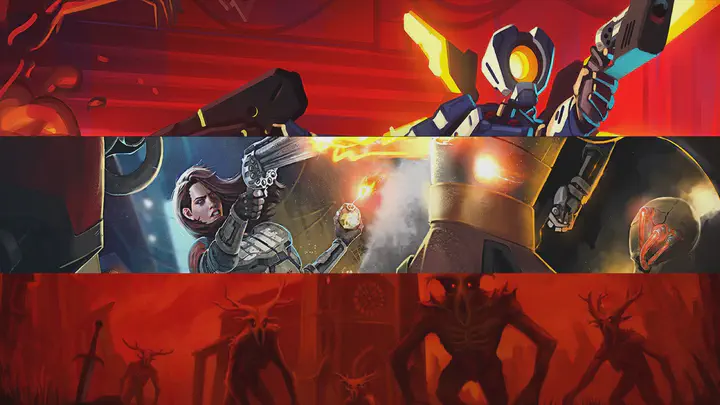From player representation to enactive presence: The case of "boomer shooters"
Presentation at the Nordic Explorative Workshops on the Philosophy of Games, ITU Copenhagen; 2023
 Image credit: fpschampion.com
Image credit: fpschampion.comPresentation abstract
Just forget it. You know they are demons; we know they are demons; we both want to shoot them in the face. Let’s just go (Hugo Martin 2016).
The videogame medium generated novel forms of storytelling and character representation, matters that were discussed in length in the context of game studies. This proposal, concerns a persistent and sizeable part of videogames that offer neither stories, nor player-character representations per se. Just action journeys. Such game experiences often evade analytical lenses due to difficulties of accounting for nothing but moment-to-moment action in virtual space.
These cases are not about how the protagonist is represented (who is usually silent) nor a storyline (which often is a necessary wrapper around a sequence of predictably escalating challenges). What they celebrate instead are affective non-verbal aesthetics of virtual enaction.A prevalent example of this type is the ‘boomer/movement shooter’ genre, a resurgence of the co-called ‘old school,’ ‘mindless’ first-person shooters, which was kickstarted with the modern reboot of Doom (id Software) in 2016.
Games of this genre often display contempt toward high brow or consistent narratives. Here, any potential or necessary injection of story elements is rather utilitarian, serving as pacing break, setting up the gameworld, and empowering the player, often toward the ridiculous.
“Just forget it […] Let’s just go,” Doom director Hugo Martin remarked on its ridiculous staging. Whether, Nazis, demons, aliens or other necessary evils, what these games suggest is a mode of representation through identification with what the protagonist can practically do in the gameworld, and less than, or even against notions such as who they are, or why they do. They boil down to enactive representation: the mastery of actions like jumping, dashing, sliding and shooting, which define and set apart the protagonist in both worlds – what Martin termed ‘Doom dance.’
Workshop programme
Tuesday August 29
09.30 Registration and Introductions
10.00-11.30 Representation, Imagination and Fiction
Stacie Friend
11.30-13.00 Lunch break
13.00-13.45 Representations of the Immaterial Through Player as a Prop in Video Games
Maciej Jemioł
13.45-14.30 From Player Representation to Enactive Presence: The Case of ‘Boomer Shooters’
Constantinos Mitiadis
14.30-15.15 The Game of Video Game Objects
Jesper Juul
15.15-15.45 Coffee break
15.45-16.30 The Epistemic Power of Perception In Virtual Worlds and Virtual Games
Joseph Larse
16.30-17.15 Ludofictionality
John Sageng
17.15-18.00 SNES is my Co-Author??? Authorship, Videogames, and Generative Glitches
Nathan Wildman
20.15 Conference dinner at “Madklubben”, St. Kongensgade 66
Wednesday August 30
09.30-11.00 Cybersemantics
Peter Pagin
11.00-11.45 – Diegetic versus Deictic Fiction
Rune Klevjer
11.45-13.00 Lunch break
13.00-13.45 Perceiving Represented Gameworlds: Actual, Fictional, and Imaginative Perceptions
Nele van der Mossalen
13.45-14.30 The Challenge of Genius Loci and Spatial Representation in Virtual Worlds
Daniele Monaco
14.30-15.15 Reasoning in Computerized and Non-Computerized Games
Ida Jorgensen
15.15-15.45 Coffee break
15.45-16.30 Against Metaphysical Interpretations of VR
Grant Tavinor
16.30-17.15 Why VR Does Not Involve Picture Perception – a Gibsonian Account
Edward Baggs, Paweł Grabarczyk and Zuzanna Rucińska
17.15-18.00 – Veridical Representation through Exaggeration in “Hans Christian and I”
Dooley Murphy